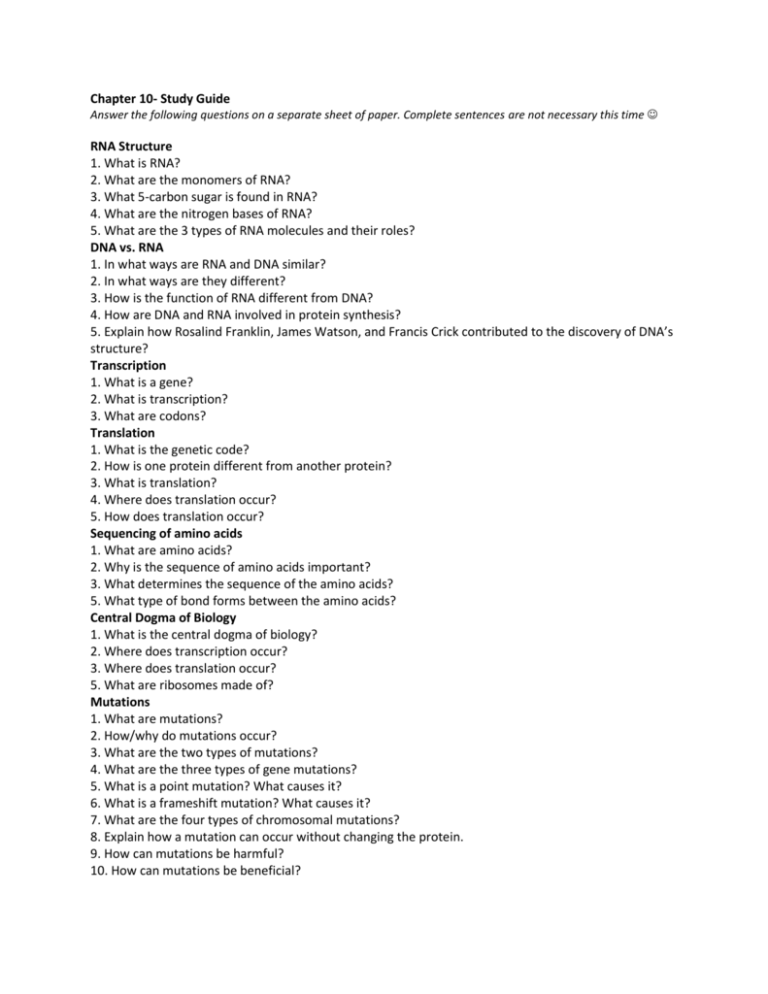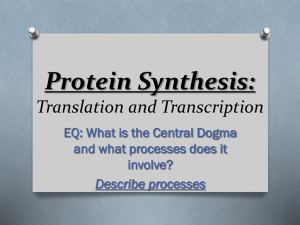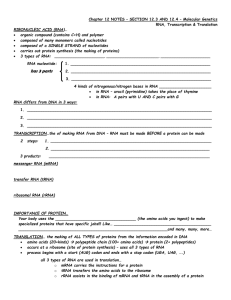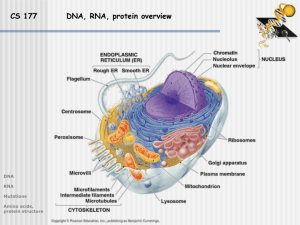Molecular Biology Study Guide
advertisement

Chapter 10- Study Guide Answer the following questions on a separate sheet of paper. Complete sentences are not necessary this time RNA Structure 1. What is RNA? 2. What are the monomers of RNA? 3. What 5-carbon sugar is found in RNA? 4. What are the nitrogen bases of RNA? 5. What are the 3 types of RNA molecules and their roles? DNA vs. RNA 1. In what ways are RNA and DNA similar? 2. In what ways are they different? 3. How is the function of RNA different from DNA? 4. How are DNA and RNA involved in protein synthesis? 5. Explain how Rosalind Franklin, James Watson, and Francis Crick contributed to the discovery of DNA’s structure? Transcription 1. What is a gene? 2. What is transcription? 3. What are codons? Translation 1. What is the genetic code? 2. How is one protein different from another protein? 3. What is translation? 4. Where does translation occur? 5. How does translation occur? Sequencing of amino acids 1. What are amino acids? 2. Why is the sequence of amino acids important? 3. What determines the sequence of the amino acids? 5. What type of bond forms between the amino acids? Central Dogma of Biology 1. What is the central dogma of biology? 2. Where does transcription occur? 3. Where does translation occur? 5. What are ribosomes made of? Mutations 1. What are mutations? 2. How/why do mutations occur? 3. What are the two types of mutations? 4. What are the three types of gene mutations? 5. What is a point mutation? What causes it? 6. What is a frameshift mutation? What causes it? 7. What are the four types of chromosomal mutations? 8. Explain how a mutation can occur without changing the protein. 9. How can mutations be harmful? 10. How can mutations be beneficial?











